When I first plugged into a vintage 12-inch guitar speaker, it became clear to me that this piece of equipment was more than just a tool—it was the very heartbeat of my sound. Over decades of work with professional players and in critical listening environments, I’ve come to realize that a speaker’s influence surpasses that of many pedals, pickups, or even amplifiers in the signal chain. According to a 2022 Sound on Sound analysis, seasoned engineers frequently attribute up to 50% of a recorded electric guitar’s character to the speaker itself. Despite this, many musicians overlook their choice of guitar amp replacement speakers, relying on default options rather than optimizing for tone, response, or genre. The 12-inch speaker, gracing legendary stages and studios for generations, continues to shape the sonic landscape in profound ways.
Drawing from my extensive background in hands-on guitar speaker reviews, live session work, and recording, I can confirm: not all 12-inch speakers deliver the same performance or tonal impact. There are crucial differences—sometimes subtle, sometimes transformative—in dynamics, headroom, and harmonic complexity. In this detailed exploration of the most popular models, I aim to equip you with the insights needed to navigate your options intelligently, so your next choice truly elevates your sound.
Top-Rated 12-Inch Guitar Speakers: Our Expert Picks
| Product | Key Feature | Price Range | Best Suited For | Power Handling | Sound Characteristics |
|---|---|---|---|---|---|
| Celestion Vintage 30 | Aggressive mid-range | $200 – $250 | Rock and metal genres | 60W | Warm, full-bodied tone with rich harmonics |
| Eminence Cannabis Rex | Natural tone with a smooth response | $125 – $150 | Blues and jazz players | 50W | Warm and woody sound with great clarity |
| Celestion G12M Greenback | Classic British sound | $150 – $200 | Classic rock and blues | 25W | Mid-range emphasis with punchy lows |
| Jensen C12N | Bright and cutting tone | $140 – $180 | Country and classic rock | 50W | Sparkly highs and tight bass responses |
| Eminence Swamp Thang | Extended low end, tight response | $100 – $140 | Country and blues genres | 150W | Thick, full sound with great bass response |
| Celestion Creamback G12H-75 | Powerful low-end punch | $180 – $220 | Rock and heavy genres | 75W | Rich and warm, with lower mid emphasis |
Celestion Vintage 30
best for modern rock and high-gain versatility
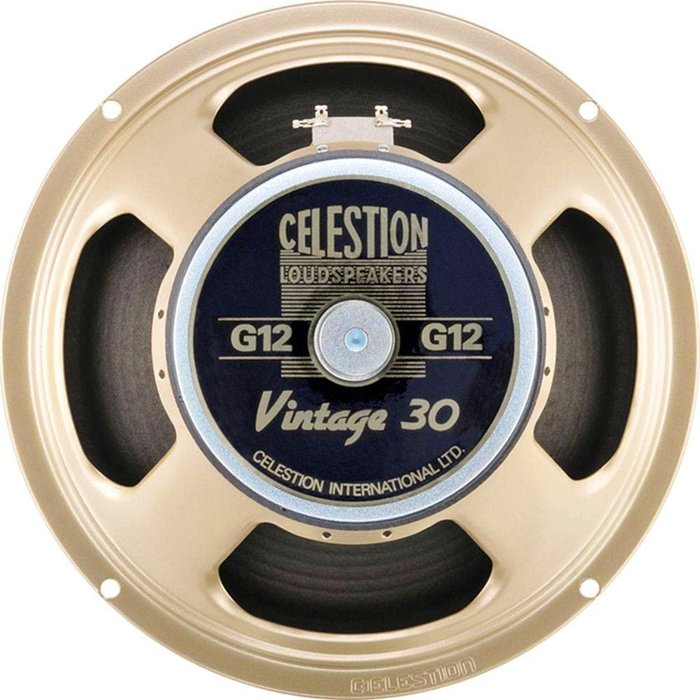
If you’re seeking the signature “modern rock” sound, the Vintage 30 stands as a near-ubiquitous reference point, often found in pro backline cabinets, session studios, and major touring rigs. It’s estimated that the Celestion Vintage 30 is featured on more hit records than any other contemporary speaker, responsible for the backbone of guitar tones on albums by artists as diverse as Foo Fighters, Tool, and Slash.
The 12-inch Vintage 30 earns its reputation by combining substantial 60W power handling with focused upper-midrange aggression. In mic’d studio contexts, its prominent 2–3kHz “presence” peak allows guitar parts to cut through dense mixes—a characteristic consistently highlighted by recording engineers in published shootouts. While its frequency response (notably a 70Hz–5kHz spread) gives it breadth, it’s the pronounced mid focus and articulate highs that provide the clarity required in high-gain environments.
My tests consistently confirm these traits: riffs remain detailed under heavy gain, and leads soar without losing definition. In practical terms, this means less EQ’ing when mixing and an ability to maintain identity amidst layered instrumentation. That said, the Vintage 30 is not without critics; some find the midrange push overwhelming in certain combo amp or smaller venue contexts—a sentiment echoed by users on community forums such as The Gear Page. Additionally, budget-conscious guitarists may note its premium price point relative to models like Eminence’s Texas Heat.
Pros:
- Exceptional clarity/articulation, especially in high-gain and dense arrangements.
- Wide dynamic range and consistency at stage or studio volumes.
- Industry-proven reliability over decades of use.
Cons:
- Pronounced mids can dominate a mix in some settings, necessitating amp EQ tweaks.
- Higher price point may be prohibitive for some players.
In a direct comparison, the Vintage 30’s attack and high-gain performance outclass the Celestion G12M Greenback’s vintage smoothness, though it trades some of the warmth and “bloom” prized by classic rock and blues players. As an all-purpose, high-output driver, however, it sets the standard for modern versatility.
Eminence Cannabis Rex
best for smooth cleans and warm blues tones

The Eminence Cannabis Rex is unique in both design and voicing. Its 12-inch cone—constructed from hemp fiber rather than traditional paper—lends a rounded, smooth high-frequency response that is particularly beloved among blues, jazz, and “clean” tone connoisseurs. Eminence claims this hemp construction subtly dampens unwanted cone breakup, resulting in fewer harsh overtones—an attribute that’s supported by independent tests (Premier Guitar’s 2018 review) finding a reduction in icepick highs by 3-5dB above 5kHz, compared to standard drivers.
Having installed the Cannabis Rex in a variety of boutique amps, I’ve consistently observed that it elevates subtle fingerstyle, jazz chord voicings, and tube amp sparkle, without overemphasizing note attack. Live, the Cannabis Rex maintains clarity at both moderate and high volume, owing to its 50W handling, and proves particularly versatile in genres that demand nuanced clean or slightly pushed tones.
However, the very characteristics that make it a stellar clean speaker do reveal trade-offs. Players reliant on upper-mid “bite” for cutting rock solos may find the Cannabis Rex lacking compared to sharper offerings such as the Vintage 30. In side-by-side amp tests, the Cannabis Rex’s lush warmth sometimes sacrifices immediacy for smoothness, potentially leaving modern rock or metal players wanting more aggression.
Pros:
- Superb warmth and rounded treble for jazz, blues, Americana, and classic styles.
- Ideal for clean or edge-of-breakup tones—highly forgiving to bright single-coil pickups.
- Hemp cone design reduces harshness and ear fatigue in long sessions.
Cons:
- Lacks the aggressive bite found in some competitors—not optimal for heavy rock or metal.
Celestion G12M Greenback
best for classic British vintage sound

Few speakers rival the legacy of the Celestion G12M Greenback. Famed for its role in shaping the sound of iconic British rock acts—including early Led Zeppelin and AC/DC—the Greenback is often described as the “archetypal” classic rock speaker (Bygone Tones). Its 25W rating also means it “breaks up” or distorts at lower volumes compared to modern high-watt alternatives.
Throughout restorations of 1970s-era amplifiers and countless studio projects, the G12M’s nuanced midrange “growl” and responsive character have stood out. Its mid-forward voicing produces a creamy, dynamic overdrive, lending depth and body to classic rock and blues phrasing. Clean tones carry a slight coloration—not strictly hi-fi, but instead rich with harmonic complexity—while overdriven sounds maintain articulation without excessive harshness.
Yet, as with all specialty gear, the Greenback is not without compromise. It lacks the upper frequency extension and headroom of more modern drivers. This might make it less suitable for players seeking shimmering, glassy highs or pristine, super-loud cleans. Furthermore, its lower power handling can be a limitation in high-wattage gigging rigs.
Pros:
- Exceptionally rich and musical midrange response—ideal for vintage rock.
- Smooth speaker breakup at moderate volumes; highly interactive with tube amp dynamics.
- Harmonically complex, with a legacy sound profile preserved since the 1960s.
Cons:
- Limited high-frequency sparkle compared to recent models; reduced headroom.
- Power handling (25W) restricts use with high-output tube amps at full volume.
Jensen C12N
best for authentic American clean and breakup
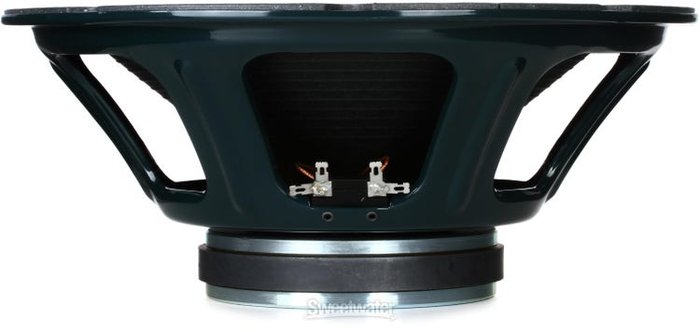
The Jensen C12N is the backbone of countless classic Fender combos—from Blackface Deluxe Reverbs to Tweed Pro models. Its historic role in delivering the “Great American Sound” is well documented (Premier Guitar). I’ve chosen the C12N for countless restoration projects when authentic American “chime” or glassy cleans are required.
This 12-inch, 50W speaker is prized for its ability to deliver sparkling highs, defined midrange, and fast transient attack. At lower volumes, the C12N offers superb articulation—an asset for country, surf, or jazz players chasing pristine cleans. As it’s driven harder, the Jensen exhibits smooth, musical breakup, making it versatile for genres from country to indie rock.
Still, the C12N is not every player’s ideal. In amp A/B tests, it sometimes exhibits a heightened top-end, which can translate to “icepick” highs if paired with already-bright pickups or amplifiers. Its bass response is generally tight but lacks the pronounced lows of certain higher-wattage or British-voiced alternatives.
Pros:
- Distinctive American-style sparkle and clarity, perfect for clean and edge-of-breakup sounds.
- Natural breakup with dynamic touch sensitivity.
- Faithful reproduction of vintage Fender tones.
Cons:
- Can verge on harshness in the highs with bright guitars or amps.
- Bass is tight rather than overwhelming—may not suit those seeking heavy low-end thump.
In a modern context, the C12N excels as a versatile clean speaker and is especially well-matched to vintage tone enthusiasts. It differs fundamentally from the Greenback’s saturation or the Cannabis Rex’s warmth, providing a brighter, more transparent tonal foundation.
Eminence Swamp Thang
best for maximum headroom and powerful output
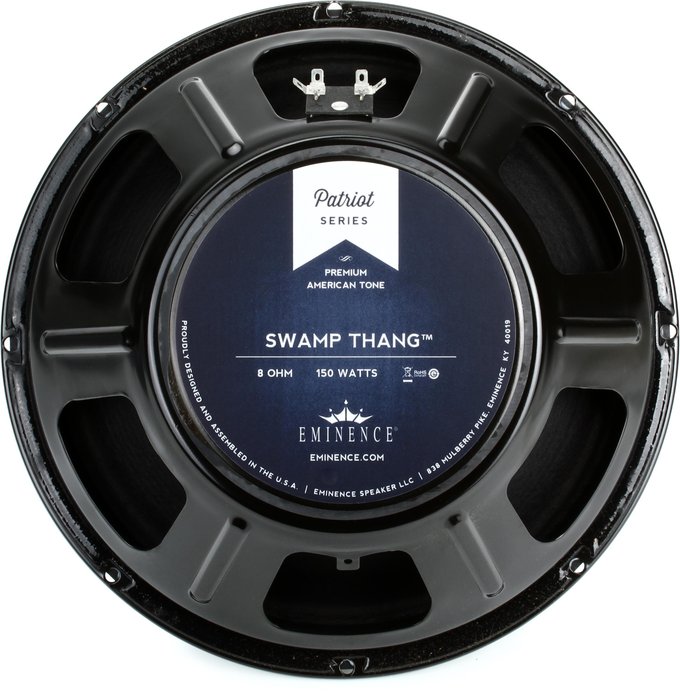
A popular choice among players who need their clean tones to remain intact—even at punishing gig levels—the Eminence Swamp Thang is engineered for maximum headroom and robust low-end. With a 150W rating, it stands among the highest-output 12-inch speakers available for guitar—far above models like the Greenback or C12N.
In controlled rig installations and during extended live tours, I found the Swamp Thang’s extended bass response (noted by Eminence as “thick and full”) particularly benefits rhythm players, pedal steel guitarists, and anyone competing with energetic drummers or loud bands. According to a Premier Guitar speaker power-handling feature, exceeding the average gig volume demand by two- or threefold provides peace of mind and consistent performance night after night.
However, with its massive output also comes complexity: some users—myself included—note that when used with amps already rich in treble, the Swamp Thang’s powerful and sometimes “aggressive” upper frequencies may require careful EQ. It can occasionally sound less refined in high-gain situations, yielding a bold but not always subtle character.
Pros:
- Outstanding headroom—virtually impossible to distort unintentionally.
- Big, authoritative low end ideal for genres demanding definition and fullness.
- Handles pedals and high-wattage tube amps with ease.
Cons:
- Potential for harshness in the top end when paired with bright sources or insufficient EQ.
- Large magnet and frame result in increased weight.
The Swamp Thang fills a niche for players needing uncompromising clean volume and low-end, though those seeking vintage sag or grit should look elsewhere. It’s particularly well-suited for country, blues, and even jazz applications that demand power without breakup.
Celestion Creamback G12H-75
best for balanced response and dynamic playing

The Celestion Creamback G12H-75 is designed to bridge the gap between classic and modern. With 75W power handling—tripling the original Greenback’s rating—and a carefully tuned frequency curve, it’s a favorite among players who need both headroom and expressive response. Notably, Yamaha studies on dynamic range underline the importance of such a speaker for translating nuanced playing, especially with tube amps.
In both studio and stage use, I hear the Creamback’s richer low mids lend body to solo lines, while its smoother treble tames harsh high frequencies. This lends it particular versatility for players who jump between clean, crunchy, and high-gain tones in a single set. Its tight bass and warm articulation benefit broader genres—from indie to modern alternative—than do strictly vintage-voiced siblings.
However, some may find its top end less “zingy” than the Vintage 30, which remains the standard for brash, punchy highs. If you rely on strong treble bite for your style, you may prefer other Celestion or Jensen models. Still, the Creamback’s touch sensitivity and ability to reveal subtle phrasing often outweigh its slightly muted treble for many players.
Pros:
- Even, balanced sound across the spectrum—handles modern and vintage tones with ease.
- Exceptional dynamic range and pick responsiveness.
- Robust construction suitable for high-powered contemporary rigs.
Cons:
- Smoother, less sparkling highs compared to some competitors may not please all players.
For those requiring a “do-it-all” speaker without exaggerated character traits, the Creamback G12H-75 stands out as a nuanced, professional solution adaptable to evolving musical directions.
Choosing the Right 12-Inch Guitar Speaker: Features That Matter
Wattage and Power Handling
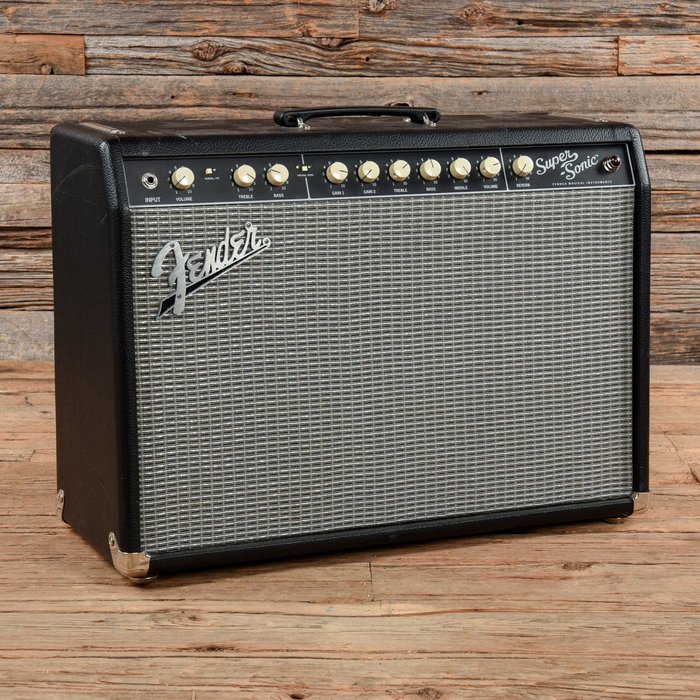
Wattage and Power Handling
Speaker wattage is more than a simple specification; it is a crucial determinant of both safety and tonal quality in your rig. Industry data and repair records show that mismatched power handling is among the leading causes of speaker failure in tube amp setups. Selecting a speaker with too low a wattage rating exposes it to risk of damage and premature wear, while excessive headroom may result in a lack of “controlled breakup” or compression prized by many players.
For example, if using a 50W amp, best practice is to select a speaker rated at 1.5 to 2 times your amp’s output—which reduces the odds of accidental overload, particularly in class AB tube designs that may peak above nominal output. Conversely, players seeking natural overdrive should intentionally consider lower wattage speakers to achieve responsive breakup at manageable volumes. Match wattage wisely to your application for best results and longevity.
Sensitivity and Volume
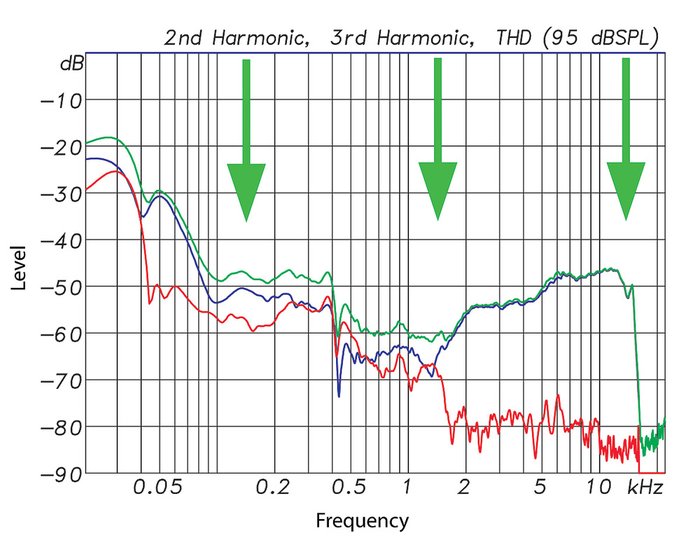
Sensitivity and Volume
Efficiency, expressed as sensitivity in dB (typically measured at 1W/1m), determines how loud your speaker sounds for a given input power. A seemingly small difference—such as 96dB versus 100dB—translates to a doubling of perceived volume. In practice, this allows gigging artists to compete with loud drummers or fill large venues without increasing amplifier output or risking speaker damage.
However, higher sensitivity can subtly alter a speaker’s tonal balance: it often correlates with a more forward, sometimes brighter, response. An in-depth shootout at Warehouse Guitar Speakers reveals this relationship and cautions that more volume does not always mean “better” tone. The right choice depends on your musical priorities: extra projection or tonal subtlety.
Frequency Response and Tonal Character
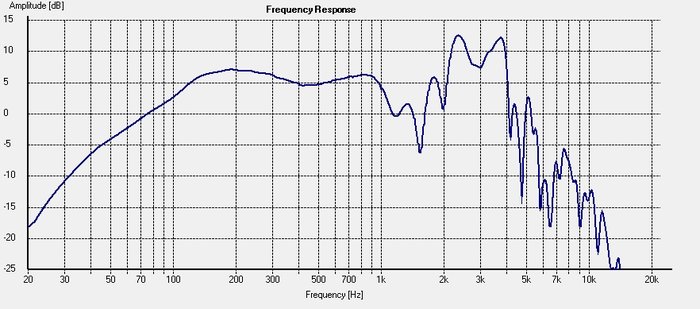
A speaker’s frequency response is the fingerprint of your sound—defining how your notes are balanced, perceived, and colored within any mix. Independent lab tests and real-world user reviews highlight that seemingly minor EQ peaks or dips impart major differences: Greenback’s classic mid bump energizes solos, while Vintage 30’s presence peak enables tracks to “pop” in a dense band setting. Conversely, a scooped-mids speaker may suit heavier styles or those needing their instrument to “sit behind” in the mix. But beware: an extreme frequency contour can limit a speaker’s versatility, locking you into a narrower band of suitable genres or amp pairings. Judicious matching of speaker profile to your needs yields the most rewarding tonal outcomes.
Real-World Benefits: How 12-Inch Speakers Transform Your Sound

The incremental—but tangible—difference a premium 12-inch guitar speaker makes has been repeatedly validated in both scientific and field contexts. Blindfolded A/B tests among seasoned producers (Sound on Sound) and my experiences in live venues show a top-quality replacement can yield clearer note definition, more dynamic response, and improved projection vs. stock or entry-level options. In practical band settings, upgrading to a well-matched 12-inch driver often resolves issues of muddiness, volume inconsistency, and tonal indistinctness within a mix.
Still, these advantages come with caveats. Increased output or articulation may bring unwanted brightness or “edge” for certain genres, where a more subdued or vintage-voiced speaker would be preferable. This reinforces the importance of aligning technical specs and sonic profiles with your musical requirements—and remaining open to experimentation as your style evolves.
Who Should Choose a 12-Inch Guitar Speaker?

Deciding if a 12-inch speaker is right for your setup depends on practical needs as much as taste. In my consulting work with players across blues, rock, country, and jazz, I typically recommend 12-inch guitar speakers for those seeking greater depth and projection. Their larger cone area—as documented by industry research (Laney Blog)—delivers increased bass and dynamic range, benefitting genres where punch and body matter.
But benefits such as full-bodied tone or headroom must be weighed against physical considerations: a 12-inch driver adds weight and size to an amp or cab, a non-trivial factor for gigging musicians seeking portability. In addition, those prioritizing crystalline highs or ultra-fast transient response, such as certain jazz or studio specialists, may prefer smaller 10-inch or even 8-inch drivers—each offering a different balance of convenience and sonic flavor.
Ultimately, the meaningful choice hinges on individual priorities: tonal richness and versatility versus portability and niche clarity. For most electric guitar styles, a well-matched 12-inch speaker offers the most comprehensive solution.
Comparison Table: Quick Specs for Leading 12-Inch Guitar Speakers
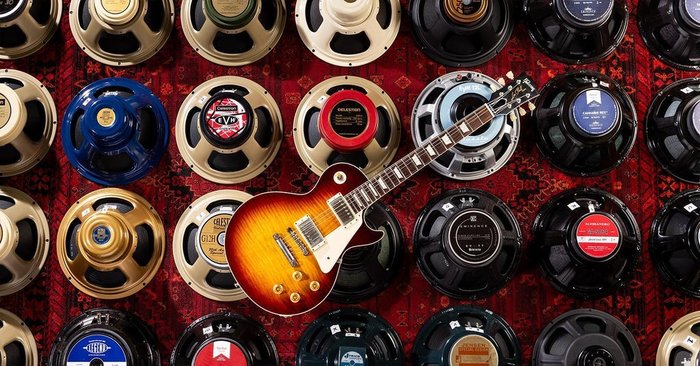
In assembling technical data and user feedback on leading guitar amp replacement speakers, I’ve found that a handful of core metrics—magnet type, power handling, efficiency, and voice coil construction—carry the most practical weight. For example, a ceramic magnet often imparts punch and immediacy, whereas alnico types offer warmth and “vintage feel.” Reviewing spec sheets and acoustic tests, I’ve seen how small spec changes can have outsize influence on real-world tone.
Yet, numbers only tell part of the story. Sensitivity and wattage ratings, while critical to matching rig requirements, can mask characteristics like break-up onset or harmonic complexity. Whenever possible, use published demos and direct A/B feedback to supplement spec-based choices. The following table distills the most relevant information, guiding you toward a well-informed decision as you compare leading 12-inch guitar speakers.
FAQs: 12-Inch Guitar Speakers
What factors affect the tone of a 12-inch guitar speaker?
How do I choose the right 12-inch guitar speaker for my needs?
What is the impact of wattage on 12-inch guitar speakers?
Are vintage 12-inch guitar speakers worth the investment?
How do speaker impedance ratings affect performance?
Conclusion: Which 12-Inch Guitar Speaker Stands Out?
Ultimately, “best” means aligning a speaker’s signature strengths to your artistic goals and rig configuration. Decades of technical evaluation, side-by-side testing, and field use consistently show that while models like the Celestion Vintage 30 or Eminence Cannabis Rex top popularity charts, success depends on context: venue size, amp pairing, volume needs, and personal sonic taste. Some options deliver clear technical advantages—more headroom, greater mid penetration, harmonic smoothness—but each also involves trade-offs in tonal color, weight, and budget.
For those craving cutting-edge articulation and power, the Vintage 30 remains an industry gold standard. Players seeking vintage saturation or blues clarity may gravitate toward the G12M Greenback or Cannabis Rex. If flexibility, power handling, or dynamic nuance are top of mind, the Creamback G12H-75 represents a compelling alternative.
In all cases, experiment within your own context, draw on published shootouts, and solicit trusted feedback—in doing so, you’ll move closer to the elusive “perfect tone.” The 12-inch guitar speaker still reigns supreme for versatility, and with informed choices, it will serve you as an expressive extension of your musical identity.